Latin American countries are popular for software development outsourcing due to their proximity to the United States, their strong pool of talented engineering professionals, and their favorable time zones.
The software outsourcing services industry in LatAm has been growing significantly in recent years, and the region is home to many globally recognized tech companies and startups.
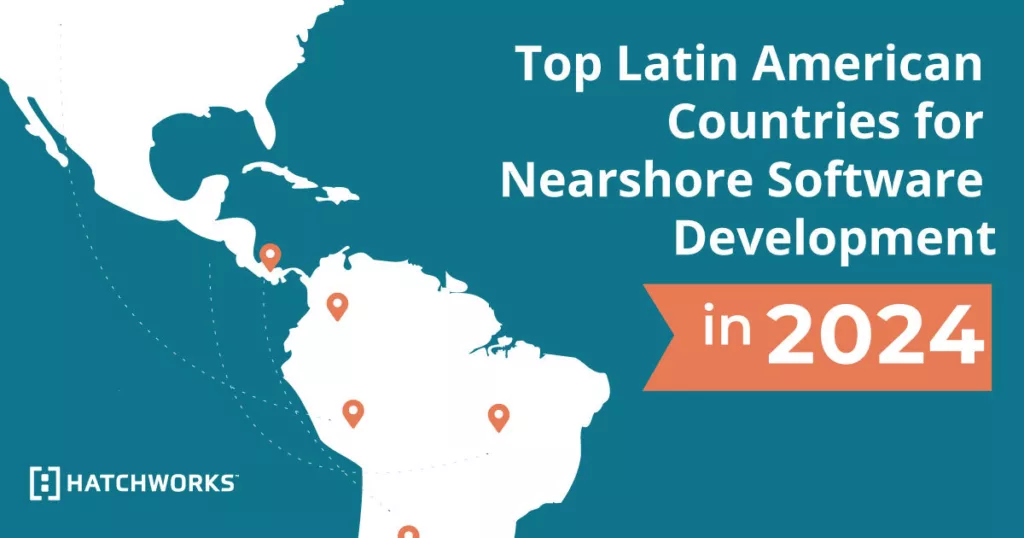
In addition to its technical capabilities, Latin America has a rich cultural heritage and a strong tradition of entrepreneurship. Many Latin American countries have business-friendly policies and favorable climates for investment.
The cost of living and doing business in many Latin American countries is also lower than in the United States and Europe, making it an attractive option to save on development costs without compromising on quality and time to value.
Why do companies outsource to Latin America?
Think of nearshoring as the perfect date and offshoring as a long-distance relationship.
 Imagine finding the perfect date – the right partner who shares your interests and goals, has a strong understanding of your needs, and is always there to support you, in your time zone.
Imagine finding the perfect date – the right partner who shares your interests and goals, has a strong understanding of your needs, and is always there to support you, in your time zone.
This is what nearshore is like for companies. It provides a level of proximity and cultural affinity that allows for efficient and effective collaboration. Plus, you’ll work with talented developers who have a strong understanding of the local job market.
On the other hand, offshore software development feels like a long-distance relationship – it may seem attractive due to lower labor costs, but it often comes with its own set of challenges such as language barriers and time differences. While it may work for some, maintaining a strong working relationship requires a lot of effort, patience, and some sleepless nights.
Want to dive deeper into the differences between these two outsourcing market options? Read our comprehensive comparison of Nearshore vs. Offshore software outsourcing.
In this blog, we’ll explore specific outsourcing destinations and why they could be the perfect match for the needs of North American companies.
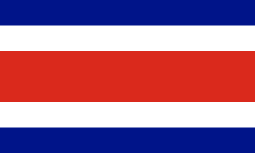
Costa Rica
Costa Rica is a small but developed country in Central America with a growing software development industry, especially strong in custom software development. Its favorable time zone (same as Eastern US) and cultural compatibility with the US enable easy communication and collaboration between teams and client companies.
The cost of living and doing business is generally lower than in the United States, which is advantageous to save on development costs. The country’s strong infrastructure and stable political environment make it attractive for foreign investment. Despite recent challenges posed by rising energy and food costs and tight financing options, the country’s GDP (Gross Domestic Product) is projected to reach a growth rate of 3.2% in 2024.
The IT industry is supported by several universities and research institutions, as well as many business incubators and accelerators. The workforce is highly educated with a high percentage of degree holders. The country ranks fifth in Latin America on Coursera’s 2022 Global Skills Report. which measures proficiency in business, technology, and data science.
Its strong tradition of entrepreneurship and innovation culture has helped create many successful tech startups. The country has a business-friendly environment and is home to a number of multinational corporations that have established software development centers, including Intel, HP, and IBM. These companies helped Costa Rica become a hub for software development in LatAm, with cities like San José and Heredia setting the standard for supportive business environments.

Brazil
Brazil, the largest and most populous country in South America, is making its mark as a significant player in the global arena. It boasts a robust software industry with over 6,000+ software development companies and a software market recently valued at $11.3 billion. Brazilian software developers are known for their expertise in Java and .Net, making them sought after by foreign companies in need of specialized skills.
Thanks to favorable time zones that align with the US, companies can enjoy seamless communication and collaboration with Brazilian teams during regular business hours. This, along with its cultural compatibility, makes it a top destination, though Brazil stands apart from its neighbors in terms of language and cultural similarities. Portuguese is the official language, while Spanish is dominant throughout the rest of Latin America.
Brazil has a robust supply of skilled technology professionals, with over 200,000 STEM students graduating annually from its institutes. Sao Paulo, Rio de Janeiro, and Belo Horizonte are among the most prominent tech hubs in Brazil, known for their thriving startup ecosystems and supportive business environments. Some of the biggest names in the global tech industry, including IBM, HP, and Capgemini, have established a strong presence in Brazil.
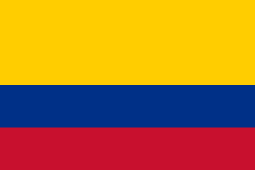
Colombia
Colombia has a strong ecosystem of universities, research institutions, and a government that supports Latin America software outsourcing to businesses worldwide. The Colombian Ministry of Information and Communication Technologies (MinTiC), is actively working to curb an impending talent crisis in the outsourcing software development industry by implementing various initiatives to encourage the growth and development of the country’s tech workforce and attract more talent to the industry. These efforts could prevent a projected shortage of over 100,000 developers by 2025.
While nearly all Colombians speak Spanish, English is an official language in parts of the country like Andrés, Providencia, and Santa Catalina Islands.
Colombia is a rising major player in the global outsourcing market and the Latin American IT market, ranking fourth in size after countries like Brazil. Colombia has a number of successful tech startups and globally recognized tech companies, including MercadoLibre and Acelero, which have established software development centers and business operations in the country.
Bogotá, Medellín, and Cali are rapidly emerging as key tech hubs in Colombia and South America at large, with significant growth in the technology sector. These cities are attracting a growing number of tech startups, multinational companies, and skilled software engineers and developers, due to their favorable business climates, supportive government policies, and thriving tech communities.
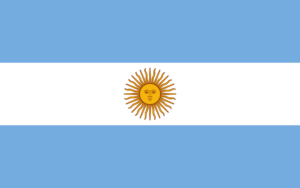
Argentina
Argentina is known for its strong culture of innovation and entrepreneurship, and there is a vibrant startup ecosystem in the country. With a GDP of nearly $500 billion, Argentina is one of the largest economies in Latin America and South America.
The country has a highly educated workforce. Argentina ranked 34th in a list of global education rankings.
Argentina has a well-developed software development industry and a strong reputation for producing high-quality software professionals. Their long tradition of excellence in computer science and software engineering has paid off as revenues are expected to rise to over $2.7 billion by 2026.
The country is home to a number of successful tech startups and globally recognized tech companies, including MercadoLibre and Despegar. There are also a number of business incubators and accelerators that provide resources and support to entrepreneurs. The Aceleradoras BA Emprende, a Buenos Aires initiative that co-finances high-impact ventures to encourage growth, has invested over $3.5 million in local entrepreneurs.
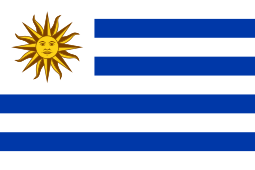 Uruguay
Uruguay
This nation of 3.4 million has made a name for itself in the software outsourcing industry, with over 1,000 software development companies driving nearly $1 billion in software exports annually, mostly to the US. Its high per capita software export figures have cemented its position as one of the world’s premier software exporting nations.
Uruguay has a number of universities focused on software development and related technologies. The country has a highly educated workforce and a business-friendly environment. On a global ranking assessing a country’s technology infrastructure, technology adoption, and investment from both businesses and governments to determine its digital readiness, Uruguay ranked second among all Latin American countries.
It is also home to a number of successful tech startups, including MercadoLibre, dLocal, and Ona. According to the European Center for Digital Competitiveness report from 2021, Montevideo, the capital of Uruguay, has been named the world’s second-fastest-growing city in the Fintech sector.
 Peru
Peru
Peru is a top-notch software outsourcing destination, ranking among the best in Latin America. Its economy is surging with a 3.5% year-over-year growth in the first half of 2022, a testament to its resilience and post-pandemic recovery.
Peru also has a couple of top-ranked universities and a thriving startup culture. Peruvian developers are highly skilled and educated, with over 25% holding STEM degrees, the highest in Latin America. When it comes to ReactJS and UX/UI design, Peru is home to some of the most talented developers and designers in the world.
The Peruvian government is investing in technology development through initiatives such as ProInnóvate and Startup Peru. The country is home to many multinational tech companies like IBM, Amazon, and Microsoft, which have established offices due to the top talent available.
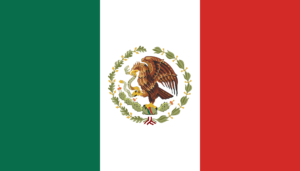 Mexico
Mexico
Mexico boasts a vast developer talent pool, with over 225,000 developers making their mark in the tech industry. This impressive number is a testament to the country’s commitment to fostering tech talent. In 2023, projections indicate that the revenue for the software industry in Mexico will reach a staggering $3.9 billion, showcasing its rapid growth in the tech sector.
The country has firmly established itself as a leading tech innovation hub. With over 20 tech parks, including renowned ones like the Creative Digital City and Guadalajara Software Center, Mexico is at the forefront of technological innovation. By the end of 2022, the startup scene in Mexico witnessed the inception of 453 new startups, and this number is expected to rise further in 2023.
Recent initiatives have seen the Mexican government opening 120 tuition-free tech universities. This move further bolsters its tech talent pool, ensuring a steady influx of skilled professionals. Every year, the country celebrates the graduation of over 130,000 engineers, further solidifying its position as a tech powerhouse.
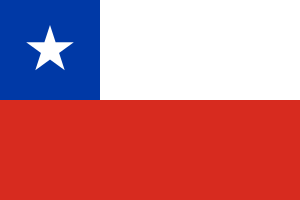 Chile
Chile
Chile, especially its capital Santiago, is emerging as a significant technology hub in Latin America. Often referred to as “Chilecon Valley”, the country is a hotspot for elite developer talent. With a robust developer community, Chile is home to over 61,000 software developers and more than 4,000 software development companies.
In 2022, the software industry in Chile made headlines by generating a revenue of $1.4 billion. This achievement reflects the country’s dedication to technological advancement and innovation. Chile’s high ranking on the Global Innovation Index, securing the 53rd position out of 132 economies in 2021, is a testament to its innovative spirit.
The country is also renowned for its quality tech education. Several Chilean universities rank among the top 500 globally, emphasizing its focus on science and engineering. With nearly 25% of Chilean graduates earning degrees in these fields, the future of tech in Chile looks promising. Additionally, Chile’s proficiency in the English language ensures smooth communication, making it a preferred destination for nearshore outsourcing and software development.
Closing Thoughts
As the global demand for continues to grow, nearshore has emerged as a popular option for infrastructure development for US businesses. By choosing the right nearshore software development partner with a strong pool of talented developers in these countries, companies can take advantage of the many benefits of nearshore development while minimizing the challenges and mitigating risks. To learn more, read our essential guide.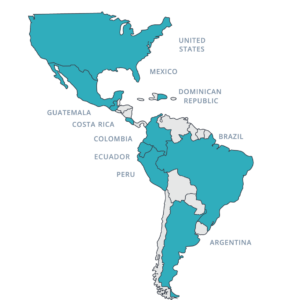
HatchWorks is the Right Nearshore Partner
Partner with HatchWorks for top-tier outsourcing services, where you’re not just getting a provider but a true partner. Experience the best of both worlds with a US-based solutions practice with the affordability and scale of Nearshore.
Our team not only understands your needs and speaks your language but also operates in a similar time zone for seamless collaboration.
Our rigorous 5-step screening process ensures only the finest talent for your project, contributing to our impressive 98.5% retention rate.
By choosing to outsource to Latin America, you benefit from lower labor costs compared to local rates, without compromising on quality or efficiency.
As one of the leading outsourcing destinations, Latin America offers a wealth of opportunities for your business. Whether it’s software development, customer service, or any other outsourcing need, HatchWorks stands ready.
Ready to harness the transformative power of Nearshore outsourcing? Contact HatchWorks today and elevate your project from concept to reality.




